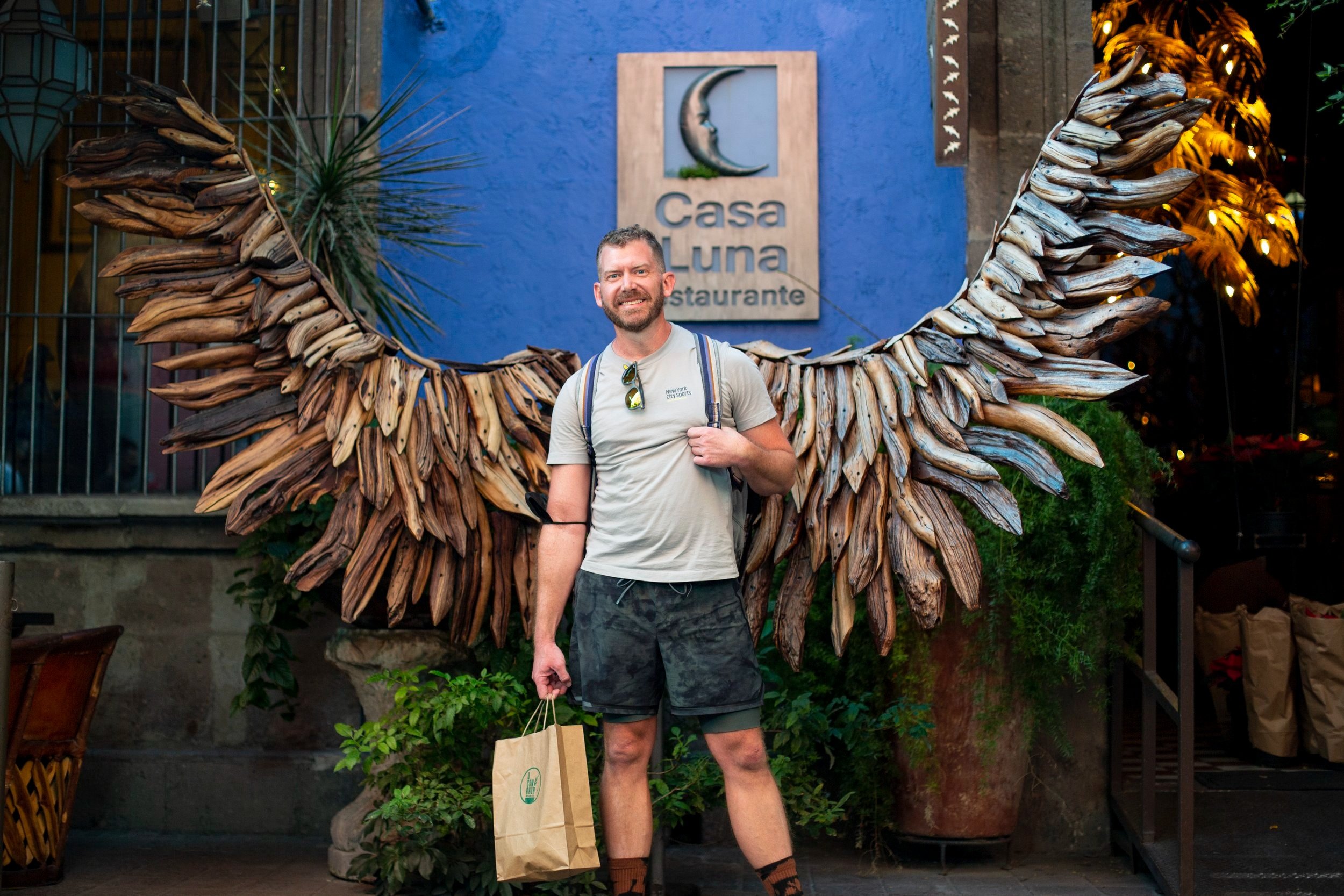Embracing the Dance of Fear: A Master's Journey
In life's complex design, fear often emerges as a formidable adversary. We grapple with its presence, trying to evade its grip, and yearn for an existence free from its clutch. But, have we ever paused to wonder: is fear truly an adversary, or could it be an unexpected ally on our path to self-discovery? James Finley, in his profound work "Path to the Palace of Nowhere," offers a perspective that resonates deeply with my journey and the art of design.
"The master is afraid. Perhaps as afraid as you are. But the master is not afraid of being afraid because the master knows it is just fear. Why be afraid of it?" Finley's words carry a profound insight into the nature of fear, one that not only captures the essence of self-discovery but also reflects the artistry of life's designs.
The Dance of Fear
Fear, often shunned as an unwelcome guest in our lives, can become a partner in a dance of self-discovery. Just as a designer understands the importance of negative space, fear plays a vital role in the composition of our lives. It carves the contours, defines the shadows, and accentuates the light. It's a brushstroke on the canvas of our existence, one that adds depth and dimension.
But how does one embrace this dance of fear? Sarah Blondin, in her insightful commentary, hints at a key factor: "Why are we afraid of being afraid? Because we believe that our fear has the power to name who we are, and it fills us with shame." This notion strikes a chord with the struggles I've encountered as a designer and, ultimately, as a human being.
Fear as a Shaper
Just as a designer shapes a space by understanding its unique features and the interplay of light and shadow, fear, too, shapes our journey. Fear is not an enemy that condemns us, but a guide that invites us to explore uncharted territories of our consciousness. It forces us to confront our vulnerabilities, unearths hidden desires, and drives us to grow beyond our self-imposed limits.
Embracing fear doesn't mean dwelling in it, but acknowledging its existence. Just as I acknowledge the importance of negative space in a room to make the positives shine, recognizing fear allows us to appreciate the courage it takes to confront it.
The Path to Mastery
In the context of "Path to the Palace of Nowhere," the master is the one who understands that fear is an integral part of the journey. The master does not let fear define them but rather uses it as a stepping stone toward enlightenment. Just as a skilled designer transcends the limits of materials and structure to create something extraordinary, the master transcends fear to reach the palace of inner wisdom.
The journey is not about eliminating fear but about befriending it, understanding it, and ultimately transcending it. This transformation is akin to the transformation of a raw space into a harmonious, well-designed interior. It takes intention, skill, and the willingness to embrace every aspect of the process.
As I continue to craft spaces that evoke emotions and reflect individuality, I'm reminded that fear, like any other emotion, has its place in the design of our lives. It's the contrast that makes beauty stand out, just as fear underscores our courage and resilience.
So, let us dance with fear, not as adversaries, but as partners on this journey of self-discovery and design. For the art of living is not in the absence of fear but in our ability to create beauty and meaning in its presence.
With the spirit of a designer and fearful path towards the wisdom of a master,
Forrest “El güero”
Abrazando la Danza del Miedo: El Viaje de un Maestro
En el diseño complejo de la vida, el miedo a menudo emerge como un formidable adversario. Luchamos con su presencia, tratando de evadir su agarre y anhelando una existencia libre de su alcance. Pero, ¿alguna vez nos hemos detenido a preguntarnos: es el miedo realmente un adversario, o podría ser un aliado inesperado en nuestro camino hacia el autodescubrimiento? James Finley, en su profunda obra "El Camino hacia el Palacio de la Nada", ofrece una perspectiva que resuena profundamente con mi trayecto y el arte del diseño.
"El maestro tiene miedo. Quizás tanto miedo como tú. Pero el maestro no tiene miedo de tener miedo, porque el maestro sabe que es solo miedo. ¿Por qué tener miedo de ello?" Las palabras de Finley encierran una profunda comprensión de la naturaleza del miedo, una que no solo captura la esencia del autodescubrimiento, sino que también refleja la maestría en los diseños de la vida.
La Danza del Miedo
El miedo, a menudo rechazado como un invitado no deseado en el banquete de la vida, puede convertirse en un compañero en una danza de autodescubrimiento. Al igual que un diseñador comprende la importancia del espacio negativo, el miedo desempeña un papel vital en la composición de nuestras vidas. Moldea los contornos, define las sombras y acentúa la luz. Es un trazo de pincel en el lienzo de nuestra existencia, uno que agrega profundidad y dimensión.
Pero, ¿cómo abrazamos esta danza del miedo? Sarah Blondin, en su comentario perspicaz, insinúa un factor clave: "¿Por qué tenemos miedo de tener miedo? Porque creemos que nuestro miedo tiene el poder de definir quiénes somos y nos llena de vergüenza." Esta noción resuena con las luchas que he enfrentado como diseñador y, en última instancia, como ser humano.
El Miedo como Modelador
Así como un diseñador da forma a un espacio al comprender sus características únicas y la interacción de la luz y la sombra, el miedo también da forma a nuestro viaje. El miedo no es un enemigo que nos condena, sino un guía que nos invita a explorar territorios desconocidos de nuestra conciencia. Nos obliga a enfrentar nuestras vulnerabilidades, desenterrar deseos ocultos y nos impulsa a crecer más allá de los límites autoimpuestos.
Abrazar el miedo no significa morar en él, sino reconocer su existencia. Así como reconozco la importancia del espacio negativo en una habitación para resaltar los aspectos positivos, reconocer el miedo nos permite apreciar la valentía que se necesita para enfrentarlo.
El Camino hacia la Maestría
En el contexto de "El Camino hacia el Palacio de la Nada", el maestro es aquel que comprende que el miedo es una parte integral del viaje. El maestro no permite que el miedo lo defina, sino que lo utiliza como un escalón hacia la iluminación. Al igual que un diseñador experimentado trasciende los límites de los materiales y la estructura para crear algo extraordinario, el maestro trasciende el miedo para llegar al palacio de la sabiduría interior.
El viaje no se trata de eliminar el miedo, sino de hacerse amigo de él, entenderlo y, en última instancia, trascenderlo. Esta transformación es similar a la transformación de un espacio sin trabajar en un interior armonioso y bien diseñado. Requiere intención, habilidad y la disposición de abrazar cada aspecto del proceso.
En Conclusión
Mientras continúo diseñando espacios que evocan emociones y reflejan la individualidad, me recuerdo a mí mismo que el miedo, como cualquier otra emoción, tiene su lugar en el diseño de nuestras vidas. Es el contraste lo que hace resaltar la belleza, así como el miedo subraya nuestra valentía y resiliencia.
Entonces, bailemos con el miedo, no como adversarios, sino como compañeros en este viaje de autodescubrimiento y diseño. Porque el arte de vivir no radica en la ausencia del miedo, sino en nuestra capacidad para crear belleza y significado en su presencia.
Con el espíritu de un diseñador y el camino temeroso hacia la sabiduría de un maestro,
Forrest "El Güero"


